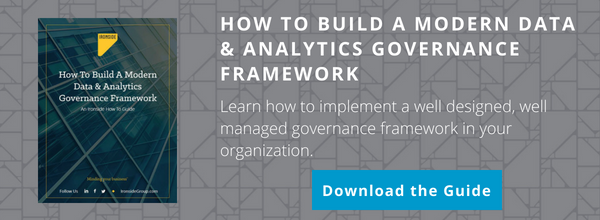Got Standards? Master Data Management’s Meaning
Master data management (MDM) efforts often get bogged down quickly due to business thinking that the entire process is owned by IT when in fact they need to set the standards. Knowing how to do that and what real MDM means will help make these efforts become collaborative and smooth to run. This article will answer several questions executives and other business leaders may have regarding MDM, in addition to proposing questions that should be used in order to leverage the full potential of MDM and illustrating real-world use cases.
What Is Master Data Management?
MDM is a comprehensive method of defining and managing critical data within an enterprise using a single point of reference. Organizations do this by setting governance over defined processes, policies, and standards from an executive perspective and then using a master data management tool to support and enforce these policies from an IT perspective. MDM lets data sharing between personnel and lines of business be restructured in a more efficient way when used and set up properly. Duplicate and inconsistent versions of the same data housed in different lines of business are removed, allowing data cohesion to develop.
The Executive Perspective

The executive team and line of business heads are the groups responsible for defining the business requirements and standards that go into a master data management strategy. In order for MDM to be effective, the critical information that gets stored as master data must be defined from a business use standpoint. Once leadership talks through this data and standardizes it across all lines of business, it can then be sent to IT. There are various questions executives can ask to focus in on critical data:
- What are the core entities of our enterprise?
- i.e. customers, suppliers, sites, products, etc.
- How can we standardize a process for inputting the core entity information interdepartmentally?
- How will we handle internal company policies to ensure that process standards are being implemented?
Once the enterprise’s core entities are identified based on each line of business’s data needs, then various processes can be written out and standardized across the organization to ensure data accuracy on the business side.
Real-World Application: Streamlining the Business
Company X-Ray has four lines of business that have their own data storage locations and procedures around how they input the data they’re collecting. During the last executive board meeting, each board member brought along a report showing the productivity and profit margin of their respective branch of the business. When they compared the data in their reports, they found that the overall profits of the business were not lining up with what the individual reports had recorded. The team noticed large discrepancies in the overall revenue that had been received by their largest client, Romeo Incorporated.
They compared the data that Sales and Production had on their reports, and found out that Sales’ revenue value was lower by several million dollars. When they compared the reports, they saw that the Sales department had several different naming conventions for Romeo Incorporated being used within their tables. When the revenue information for these different versions of Romeo Inc. was added together, the overall revenue matched Production’s revenue value.
Impact: X-Ray was not using MDM in their business practice, and because of this several of the departments’ client data was not accurate. The executive team started to implement standards for inputting client information across the various departments, which resolved the issue.
The Line of Business Perspective

Once the executive team has set procedures and policies in place for importing data and naming columns, the various lines of business implement the changes based off of their individual business needs. This leads to standardized data being reported. However, even with these initial policy and procedural changes, there are still multiple locations being used to store data.
The next step is for the department heads to determine what data is needed to accurately portray how their line of business is operating. After each line of business determines this, the executive board holds another meeting to determine the enterprise critical data. This then becomes the foundation for the master data management table the company uses.
Real-World Application: Standardizing and Communicating Effectively
X-Ray’s marketing department is mainly focused on the consumer and how they can get more client prospects for the sales department through various inbound and outbound methods. The data they collect is mostly outward facing, and sometimes the team inputs records manually. Some of the records being stored are abbreviations of client names and some are misspelled. This leads to duplications and faulty information being reported. The sales department has reports emailed to them as the marketing team makes contact with prospective clients. However, due to this inconsistent data multiple sales staff are calling the ACME Corp. and the frequent, incongruous calling causes ACME Corp. to refuse doing business with X-Ray.
Impact: X-Ray loses a client due to issues importing data and poor interdepartmental communication. Thanks to the executive board’s MDM policies, and communication between the departments about critical data, this issue is now avoided. The marketing team now uses the same naming convention consistently, and because both marketing and sales have client name, phone number, and business description as critical business data, the information is stored in one place and is only reported on once. Because of this, X-Ray has now landed a new prospective client instead of losing one.
The IT Perspective

IT’s involvement in MDM is the final step in the implementation process. The executive team has set procedures and policies, and the lines of business have addressed their critical data. Now it’s up to IT to ensure that all of the master data management tables are built, all processes run smoothly and on time, and all necessary information is deployed to the reporting environment properly. This is where an existing MDM tool could be useful to the company.
MDM analytics tools have built-in logic that finds duplicates and discrepancies within the data and makes any necessary modifications and removals. A company’s IT department can set up an environment to host an MDM tool, since it requires local processing instead of cloud access, and it’s up to IT to ensure that all the proper connections to the master data management tables holding critical business information get made, as well as the connections to various reporting environments.
Real-World Application: Storing and Controlling Data
The department heads of X-Ray get together and decide to buy a master data management tool in order to better equip themselves. They make a list of four different toolsets that the executive board then evaluates. After reviewing the benefits and limitations of each of the software options, the board decides on one to implement in their organization.
The tool they choose allows for a maximum amount of data that they don’t expect to hit for another five years, giving their data load criteria plenty of time to grow. In addition, the user interface for the software is very easy to follow. Moreover, the tool is easy to integrate into their existing warehouse, environments, and reporting software. IT is brought in to implement the new technology so the various departments can leverage the software as soon as possible. After IT assesses the new technology’s requirements, they determine it will be available for use by the end of the month.
Impact: X-Ray now has in place a technology for streamlining MDM in their business. With the addition of this toolset they have better management, a localized master data management infrastructure, and the ability to clean their data with ease.
Conclusion: The Big Picture
As you can see, master data management requires the input of several different perspectives to be successful. Combining all these angles is what results in the thought process required for implementing MDM at your organization.
Ironside has a wide array of resources available around information management, bimodal analytics, and other areas of focus that tie into and reinforce MDM. Please check them out and let us know how we can help you get the most out of MDM processes at your company:






